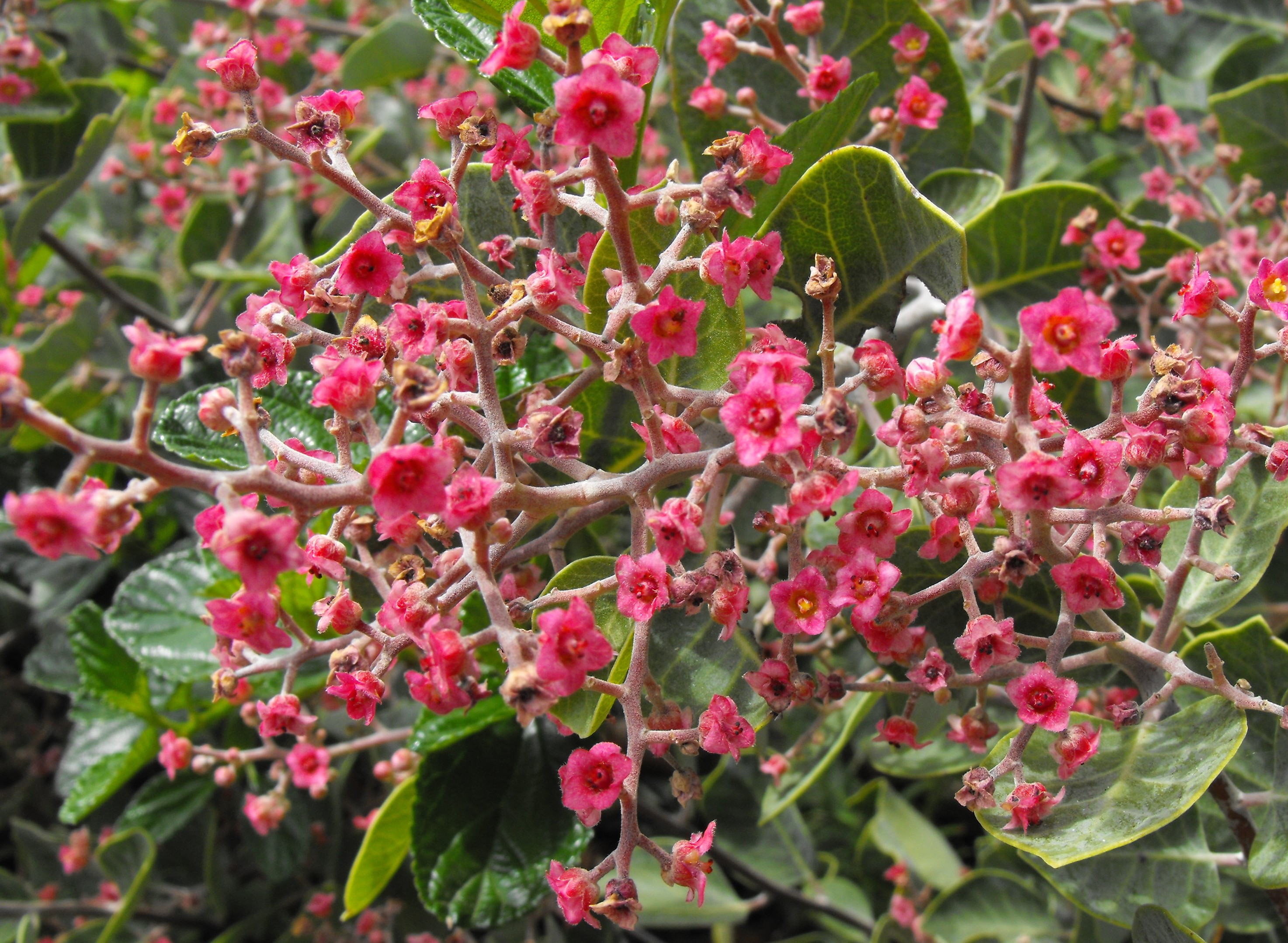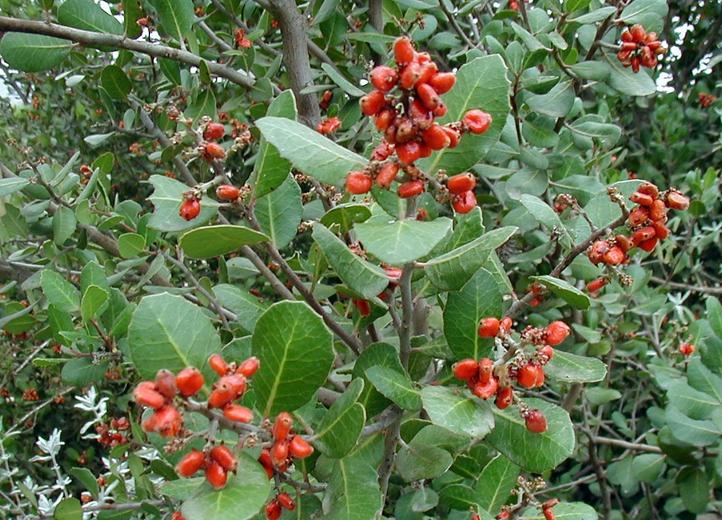 |
| Photo by Carl Lewis Pink-Flowering Sumac (Rhus lentii) |
I'm lumping both of these together as they are family related and adhere with roughly the same location, habitat and intolerance of cold requirements. These I suppose you could say are family or cousins to Laurel Sumac & Sugar Sumac.
 |
| Photo by Wiki Commons |
Though I've never planted or worked with this particular chaparral species from Baja California, it's really a beautiful plant to be considered along coastal southern California landscapes. There is a copper/brown leafed variety I've seen before and I believe Tree of Life Native Plant Nursery had this one available at one time. Not sure about Las Pilitas Nursery. One interesting thing about both of the Rhus species listed here in this post is that if you can grow these plants successfully in your location, then you probably can grow anything. Both are very sensitive to freeze or frost and will burn. Find property with either of these shrubs around and you most often will have freeze free days or should I say nights.
 |
| Calphotos Berkeley Lemonade Berry (Rhus integrifolia) |
 |
| Calphotos Berkeley |
Up on Rattlesnake Mountain in El Cajon California where the present Sky Ranch development has taken over, there is one spot up at the top where this tree can be found and I say tree because it has giant multiple trunks and until you get right up on it, it looks exactly like an oak tree. While growing up and noticing the top of that coastal chaparral mountain with it's low growing shrubs, this one or grouping of several stood out like a sore thumb because of it's deep dark green and massive bulk.
Unfortunately over the years idiots with chainsaws and fires have ruined it, but it's bounced back, though not as it's former glory. One reason it never got completely burned is the fact that it is surrounded by a rather large grouping of granite boulders and surrounding vegetation was always
| Photo - Santa Monica Trails Council California Buckwheat (Eriogonum fasciculatum) |
 |
| Photo by Ranger Steve Jax (OC Parks) Deerweed (Lotus scoparius) |
The red-berries of the Lemonade Berry and other Sumacs in North America have been widely used to brew a tart and refreshing drink. This drink is delicious, easy to prepare, fun to gather (though your hands will get sticky), nutritious and free. Its source is easily accessible to anyone in coastal San Diego or some interior valleys every summer.
This beverage was commonly made by the native Americans and early pioneers to the region. When
made proper way it is actually tastes like real lemonade. Keep in mind that my experiences refer to these species in San Diego County, and other kinds might need to be treated a little
differently.
Make sure you use cold water and allow the berries to soak for a while. Keep in mind that this is how you also make regular Lemonade with lemon juice. DON'T use hot water and steep them. You'll leach out some of the tannins and get a more bitter than tart sour taste. If it's too sour or tart, then add some sugar or a bit of honey. The tartness is also the result of Ascorbic Acid (Vitamin C) so there could be a health incentive for making and drinking this beverage.
Some Cautions:
Take special note of you are allergic to sumac as some folks could be sensitive if brief encounters with it's relative Poison Oak is an issue. But it's generally not a problem for most folks.
As usual, you have me curious. The drink sounds delicious.....or at least worth a try. Great post and informative. I'm going to make myself some ice tea right now....craving something cold:)
ReplyDeleteYou know Chris, as a kid we use to suck on them. They by themselves are sour tart and have a lomeny flavour.
DeleteHey, do you ever use Stevia for iced tea ? We use it all the time here. You can actually buy it here either as tablets in a small hand held case the exact replica of a Tic-Tac Case or you can buy several brands as small bags of what look like sugar granules. Over in the States I'm assuming it's still illegal to sell it as an artifical sugar or even as any type of alternative sweetener. However it does great with iced black tea.
I would like to try this Lemonade-berry drink. The sumac has pretty pink blossoms. I have planted a lot of berry bushes just to attract more birds to my yard. Great post and photos.
ReplyDeleteActually Eileen I believe you can also use the Sumac native to your area. Do you know what varieties live in your region ? Look it up and post it here and I'll have a look.
DeleteThanks - Kevin
--